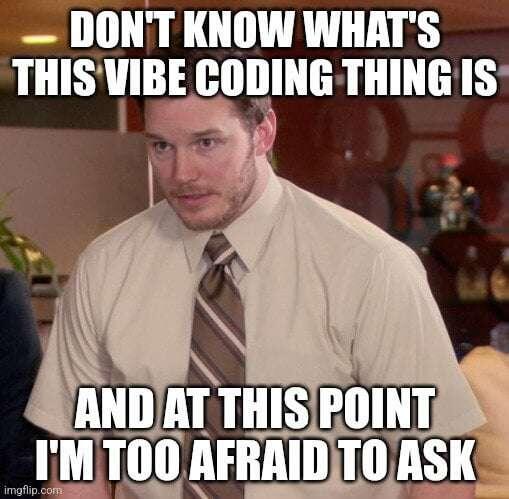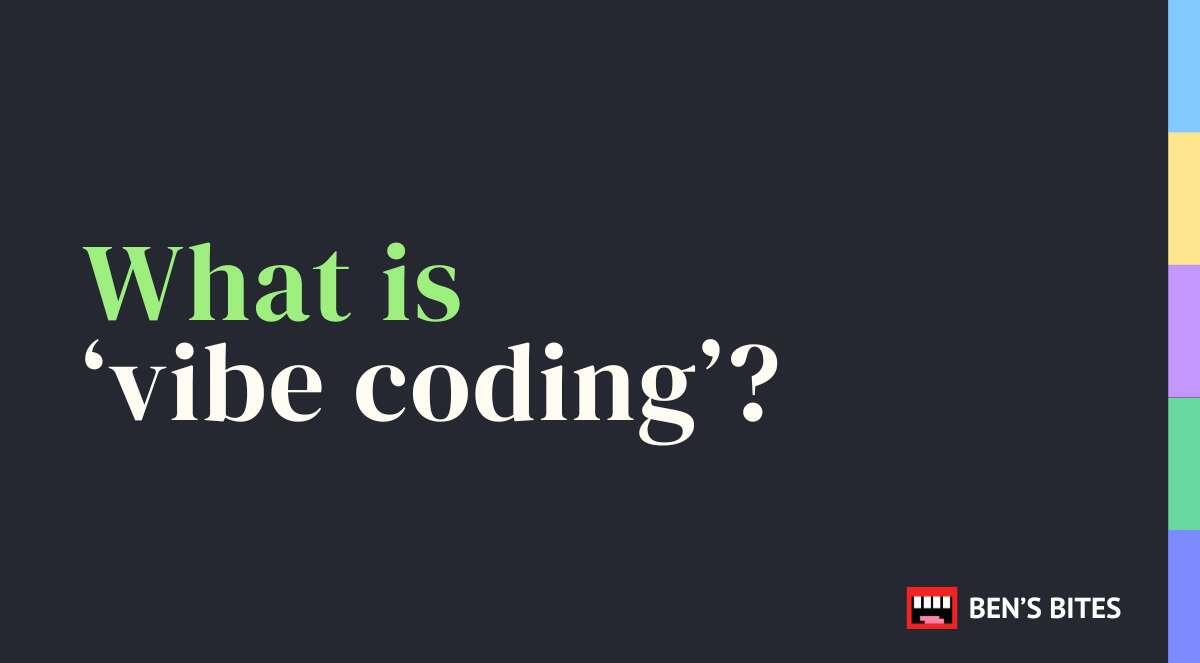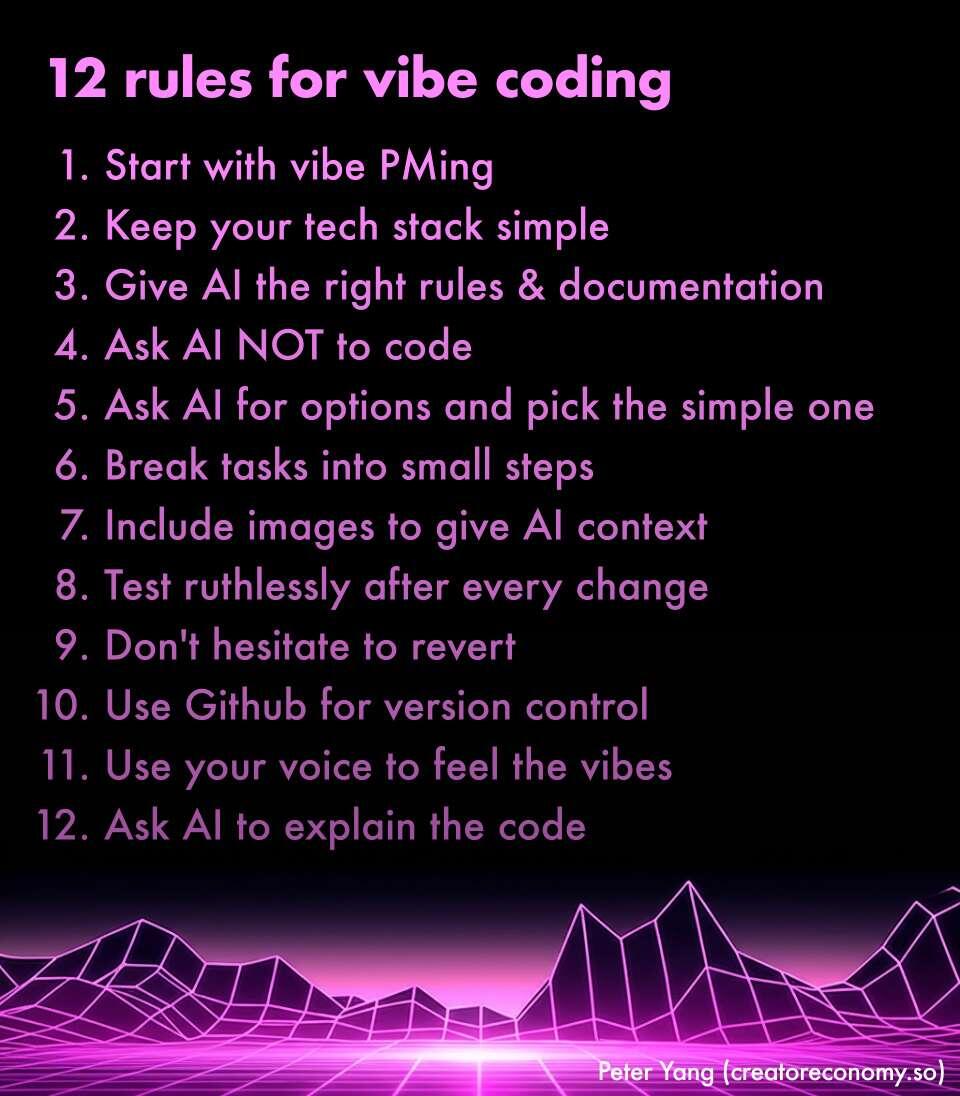🌊 SURF 'N TURF 🏝️
-THE BITCOIN BORACAY ISLAND LIFE

What is ‘vibe coding’?
Everyone’s talking about the hottest new AI trend—including .....
If you’ve been on social media recently, you’ve probably seen people refer to something called ‘vibe coding’.

But what is it, why are people talking about it, and most importantly, how does one become a vibe coder?
Let’s explore.
The origins of vibe coding
Vibe coding all started with a tweet.

Between Replit Agent, Bolt, Lovable and Cursor, it’s getting very easy to code apps without actually having to touch any code. In fact, without even having to know any code.
All that’s required is the ability to speak (well, type) English and enough imagination to describe what you want AI to build for you.
Rather than setting out with a detailed plan of what you want to build, it’s about having a rough idea and letting AI build it out and fill the gaps.
And it goes further.
When you’ve got that first version, edits and improvements are done on a whim. Tell the AI what you want to change and let it.
Getting an error message? No need to analyse the problem, just copy and paste it back to the AI and let it (hopefully) handle it.
Going around in circles with a bug that AI just can’t (or won’t) fix? Meh, just find another way to do it and move on.
The evolution of no-code.
Before vibe coding came no-code—a term to describe tools that allow people to build apps without code. Zapier, Bubble, Webflow and a whole bunch of others abstracted the code into point-and-click UIs. In other words, you could click, drag and drop etc to create websites, apps, workflows or automations that previously would have needed code.
For people that find that approach easier than learning the architecture and syntax of code, no-code was a road in to being a developer.
And AI is the next logical step here. Those point-and-click tools come with a learning curve, and frankly a lot of limitations and guardrails that cap what you can produce.
Naturally, it’s no-coders that have been some of the first people to embrace vibe coding. They have the experience of conceiving their ideas visually rather than via code and they’re powered by years of frustration from the limitations of what no-code tools couldn’t build.
Vibe coding is a big unlock for the economy
Behind the rather folksy term lies a powerful paradigm shift.
Engineers—either internal or outsourced—set the scope and pace of development at companies. But now, building can be done by the customer support team, or the sales team, or the operations team, or basically anyone that needs something.
And tools can now be built on demand to the specifications of the people needing them, and iterated just as quickly. They no longer have to be the product of planning, development and testing cycles, and an inevitable lag in implementation.
This allows companies to move faster and work more efficiently. And not to mention more cheaply when they can avoid being locked into enterprise plans on a whole suite of tools that solve-the-problem-but-not-really.
Ok, so what’s the catch?
Well, AI slop has been a big problem with written content and art. There’s a risk that it’ll be the same with vibe-coded software: lots of half-built, half-working apps that are being used and developed by people who don’t really know how they work
On one end of the scale it might mean a job done badly, but on the other this could have massive security, privacy and operational implications for companies.
The other risk is that existing developers get dumber thanks to AI doing all their work. And newer developers might never learn the fundamentals of coding in the first place, setting us up for issues down the road.
Is there a middle ground?
Probably, yes—and this is what these AI coding tools are trying to find.
Lovable and Bolt have locked squarely onto attracting complete non-coders and offering them a very simple to use platform that can can develop small-mid scale apps that look great and just work. They’ve both baked in integrations with Supabase to handle database and authentication functionality for apps, which are key (and complex) features.
Meanwhile, Replit—which started as a traditional programming IDE—is playing for the midfield, offering two AI tools, Agent and Assistant. Combined, these can be used to build and deploy powerful and complex apps.
Finally, Cursor and Windsurf are geared more towards people who already know some code and how to use an IDE, but are looking for a productivity accelerator.
If you want more reading on the topic, here’s some good advice on knowing what AI coding tool to choose and when.
Capturing market share for both existing coders and non-coders is a key goals for all these tools, so expect fierce competition and a continuous race for new features between them.
To sum it up, “vibe coding” represents a shift where anyone can build software by describing what they want in plain English to AI tools. It’s early days, so naturally we’re yet to see how questions around quality and security will be answered. But it’s always exciting to be on the cusp of new, democratised approaches to software development, and vibe coding is no different.
Credits Goes to the respective
Author ✍️/ Photographer📸
🐇 🕳️
#Apocalypse #Music #Movies #Philosophy #Literature #scuba #architecture #art
